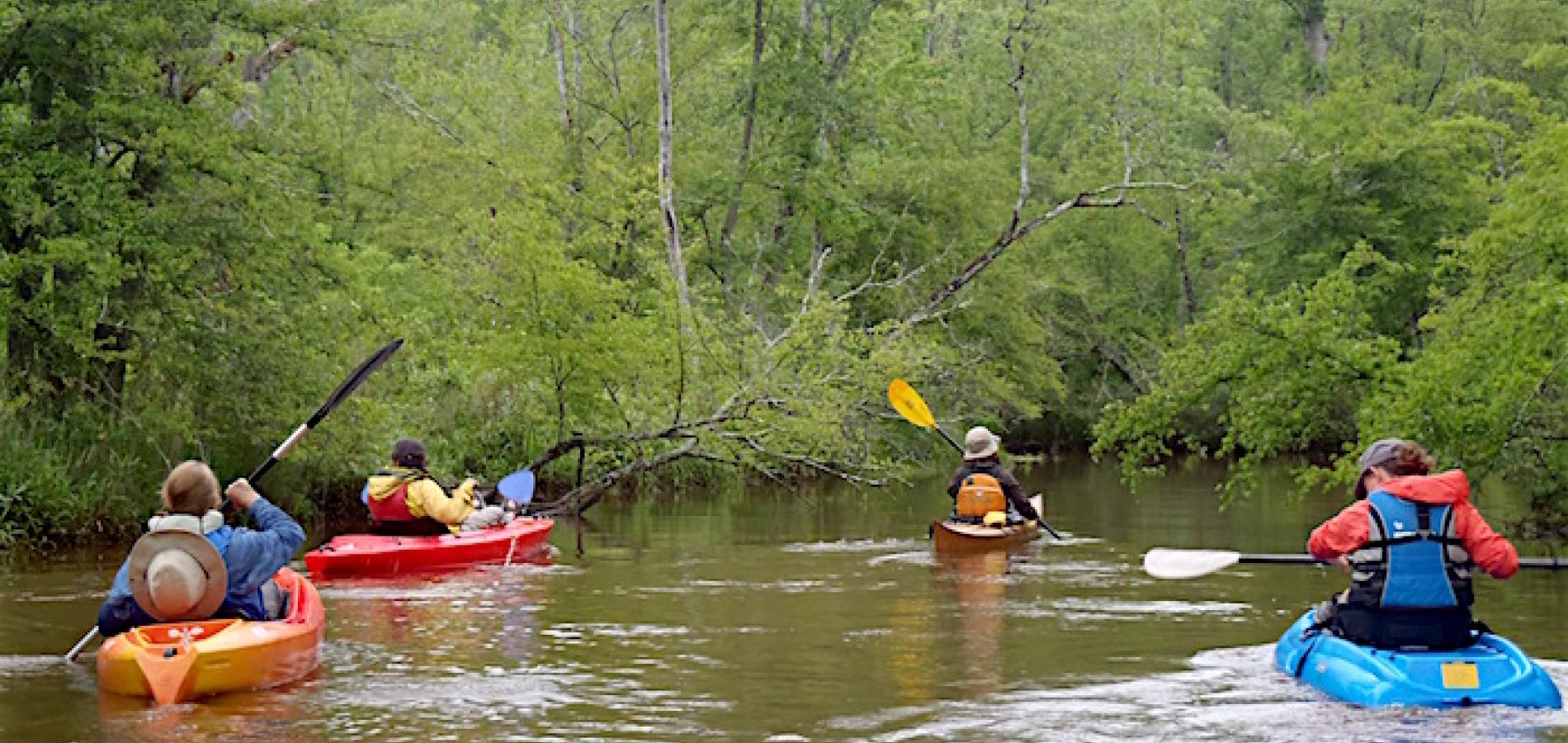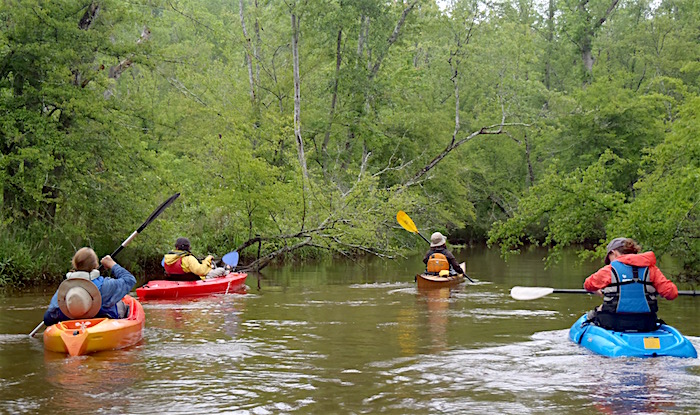Editor's note: The following is advertiser-supported content from the Essential Park Guide, Spring 2017.
NPCA's Efforts Benefit Recreation, Fisheries, Communities
The health of America’s national parks depends upon the health of the waters that surround, and flow through, them. At the National Parks Conservation Association, we work every day to protect and restore waterways across the country to benefit national parks, the communities that surround them, and the millions of people who visit them each year.
With our partners around the country, NPCA is working to protect and restore millions of acres of wetlands, bays, estuaries, lakeshores, and coastlines, as well as thousands of river miles. We accomplish this through hands-on restoration work such as planting marsh grass and restocking native fisheries; advocacy aimed at our elected officials to ensure national parks secure necessary funding to protect and restore waterways and are supported by policies that provide necessary protections and; education and engagement of our one million members and supporters about successes and threats facing national park waterways. Join us at www.npca.org/join.
Mid-Atlantic and the Chesapeake Bay Watershed
The Chesapeake Bay watershed has been called a national treasure by former U.S. presidents and is home to the country’s first national historic water trail, the Captain John Smith Chesapeake National Historic Trail. This water trail commemorates the historic voyage of John Smith more than 400 years ago. It wraps around 3,000 miles of the bay and its tributaries, connecting 12 national park sites. Navigate the water trail with ease using the “smart buoys” that allow you, through your cell phone, to learn about the bay’s history.
This trail is at the heart of NPCA conservation work to protect national parks within the watershed from energy and development threats like transmission lines and gas pipelines and water quality issues caused by warming temperatures. The bay is also experiencing a decline in important native species like Eastern oysters that serve as filters for the bay, helping to remove sediment and nitrogen pollution caused by agricultural and storm water runoff.
We also advocate for better access to the bay’s shoreline by educating and engaging younger, more diverse audiences in our paddling and restoration events throughout the watershed.
Sun Coast
Jones Lagoon has many delights for paddlers who venture into Biscayne National Park in Florida. Rich in natural beauty and cultural history, Jones Lagoon’s shallow waters lets visitors encounter nurse and other sharks, rays, upside-down jellies, schools of fish, and large wading birds. A bird rookery also lets kayakers encounter wildlife (however, restrictions are in place to keep paddlers and wildlife safe).
Jones Lagoon is named after a pioneer African American family, Israel and Mozelle Jones, who raised two boys, Arthur and Lancelot, here. With no electricity or running water the family grew pineapple and key limes, until they became the largest producer in Florida. Lancelot went on to become a master fisherman and guide to five U.S. presidents and countless dignitaries.

Jones Creek in Dinosaur National Monument is an acclaimed trout fishery/Patrick Cone
Eventually Lancelot, the sole remaining Jones, sold his family land to the National Park Service for the creation of Biscayne National Park to ensure its protection and enjoyment for future generations.
NPCA leads the effort to protect Biscayne’s prized coral reef and fisheries from threats like overfishing and warming seas. With 95 percent of the park as water, we’re working to restore natural freshwater flow to coastal areas as part of the larger Everglades restoration work.
Northwest
In Olympic National Park the Elwha and Glines Canyon dams have been removed, and the Elwha River is now flowing freely. Salmon are spawning on historic grounds, and river otters, black bear and bald eagles are returning. There are rapids, and activities at the Elwha Interpretive Center, and visitors are enjoying the sandy Elwha’s mouth along the Straits of Juan de Fuca. NPCA is helping the Park Service restore the riverbanks by transplanting 400,000 native plants.
Lake Crescent’s shoreline has boat put-ins just off the main highway, with beachfront access just a short walk from the Lake Crescent Lodge. NPCA supports enhanced river protection through the Wild Olympics proposal, which would protect waterways that connect the ocean to the heart of Olympic National Park, as well as encouraging Olympic as the first “Quiet Park.”
Northeast
Gateway National Recreation Area attracts nearly 7 million visitors annually and is one of the top 10 most-visited national parks. Nestled between Brooklyn and Queens, Jamaica Bay is part of Gateway National Recreation Area and connects the surrounding urban communities with open green space. Jamaica Bay has 9,000 acres of marshes, ponds, and beaches, as well as salt marshes for paddlers, where they may observe the endangered red knots, peregrine falcons, and bald eagles.
NPCA has created a network of Jamaica Bay Advocates, representing hundreds of passionate Americans working together to strengthen, protect, and restore Jamaica Bay.

Jamaica Bay, part of Gateway National Recreation Area, offers a great watery retreat for novice and expert paddlers alike/Michel Falco
The Southwest
The Yampa, Green, Colorado, and San Juan rivers are familiar names, but are threatened by development and climate change. The Colorado River system has 11 national park sites along it, and the NPCA is a strong advocate fighting decisions that could degrade its environmental and recreational values. We work with key stakeholders within the seven Colorado River basin states, agency officials, scientists, and conservation and recreation allies to identify minimum baseline flows.
Northern Rockies
Though world-famous for its thermal features, Yellowstone National Park has some of the best lake paddling in the Lower 48. In Yellowstone, Lewis, Shoshone, and Yellowstone lakes are great for advanced backcountry travelers by kayak or canoe, with tricky waters, incredible vistas, and wildlife including grizzlies and wolves. The Snake River in Grand Teton National Park is a blue-ribbon trout fishery, and a cold, challenging, fastflowing stream perfect for rafts, canoes, and kayaks. Jenny, Leigh, and String lakes are perfect for day trips, while multi-day trips can be mapped out on Jackson Lake. Threats of invasive species like New Zealand mud snails have made inroads to the park’s waters and require inspections of your canoes and kayaks. Keep them clean, and our park waters healthy.






 Support Essential Coverage of Essential Places
Support Essential Coverage of Essential Places







Add comment